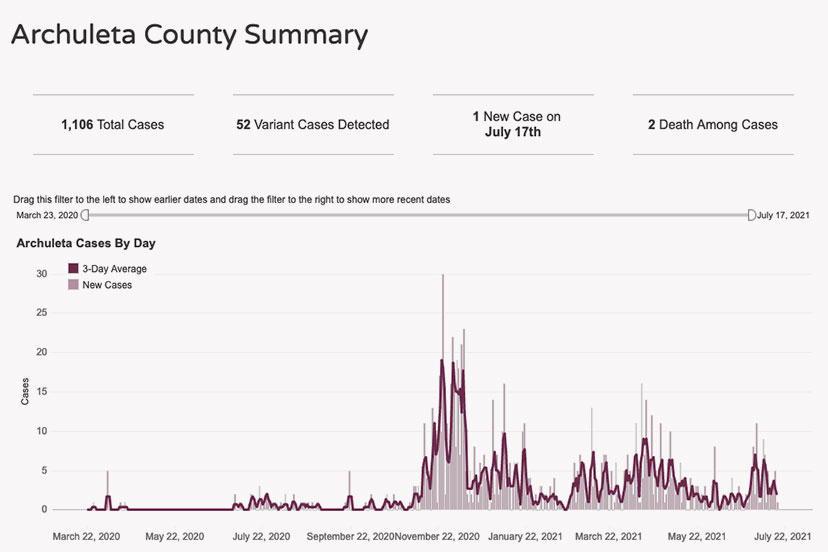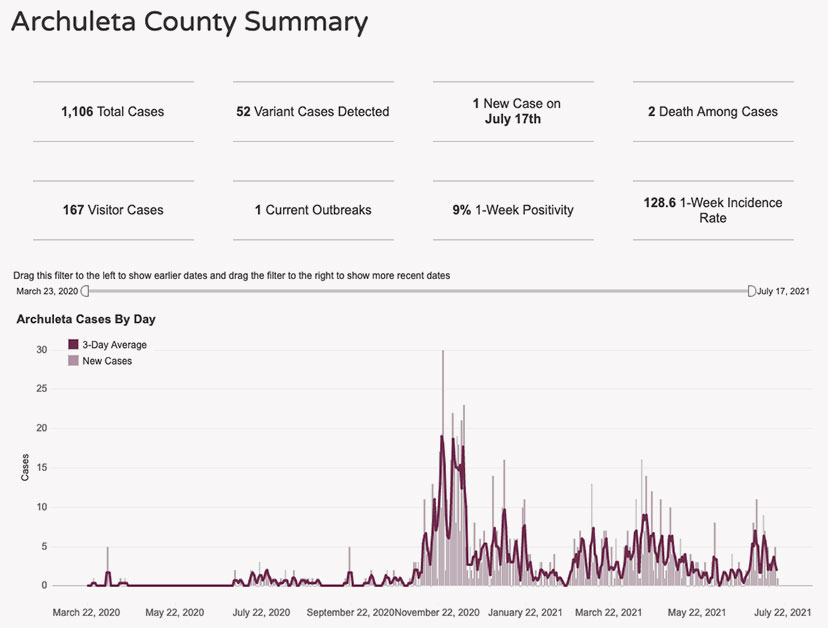As The Times Editorial Board lamented, the explosive growth in COVID-19 cases can be attributed almost entirely to adults who have delayed or declined vaccination, providing the coronavirus additional opportunities to mutate into variants capable of evading our vaccines…
— from the Los Angeles Times email newsletter, July 17, 2021
As the COVID pandemic continues to provide journalists like myself a good reason to publish articles and op-ed columns, fans of America’s pharmaceutical industry, including the LA Times, have been doing their best to guilt-trip everyone who harbors doubts about a vaccine that was rushed through the typically-one-or-two-year clinical testing phase in a matter of just four months.
Based upon limited evidence — and my even more limited expertise as a medical journalist — the Pfizer and Moderna vaccines appear to be relatively harmless, in terms of short-term harm. A search of the Centers for Disease Control Vaccine Adverse Event Reporting System (VAERS), it would appear that, of the 3 million Coloradans who have received two doses of COVID vaccine, only about 260 people have suffered serious injury from the vaccines, and only about 35 have died as a result of vaccination. If accurate, that would indicate a 0.001 percent fatality rate among those who have been vaccinated.
This information is incomplete, and its implications basically unverifiable, because it relies on voluntary participation in the VAERS system — and upon public knowledge that the VAERS system even exists. But it’s perhaps the best the CDC can do, when attempting to track 3 million vaccinated Coloradans living their independent lives.
Meanwhile, of the 565,000 Coloradans who’ve tested positive for natural COVID infections, about 6,900 have died. Apparent fatality rate? About 1.2 percent.
These numbers suggest that you are 1,000 times more likely to die from a natural COVID infection, than from getting a COVID vaccine.
What the long-term effects of mRNA vaccines might be, no one knows. No one can possibly know. The vaccines have no long-term history, yet.
And, in my humble opinion, we are unlikely to ever know what long-term harm — if any — has resulted from mRNA vaccinations, because, generally speaking, life is far too complicated for scientists to discover long-term effects from a vaccine. Especially if they never look for them.
In today’s humor column, Louis Cannon addressed the effects of mRNA vaccines on male fertility, but I wouldn’t put too much trust in his findings.
Here, however, is some information that might be trustworthy.
This chart came from the San Juan Basin Public Health website, on July 18, 2021. (You can visit their data dashboard here.) The peak of ‘confirmed’ COVID cases in Archuleta County occurred on November 25, 2020, when 30 new cases were reported. The most recent peak happened on July 2, with 11 new cases.
There are many ways to read a graph like this. If you were looking for repeating patterns, for example, you might note that we had small surges in new cases back in March 2020 and in July 2020, with zero new cases in May 2020.
We also saw increased cases in March 2021 and in July 2021, with a low point in late May 2021.
March and July, increases. May, decrease.
Are we seeing a pattern? Or is it just in my imagination?
If COVID infections are subject to annual cycles (something that we don’t know yet) in the same way that influenza spikes during certain times of the year, then we can probably look forward to a huge spike happening again around the winter holidays.
Here’s another way to look at the graph above. We had a big spike in Archuleta County during November and December, with the second-highest number of new cases reported on December 10, 2020. Since then, the reported cases have been bouncing around — 16 new cases on January 7, zero new cases on February 20, 16 new cases on April 13, zero new cases on June 7. But we note that, in spite of an aggressive vaccination campaign, the virus has not disappeared or even gotten noticeably less since the first vaccinations were administered here in December. What we see, instead, is a roller coaster of positive tests coinciding with a concerted vaccination effort.
So many things we don’t understand.
Stanford University maintains a map that shows COVID cases, county by county, for the entire US. According to the map on Sunday, July 18, there are a few hot spots in Colorado, as shown by the colors “red” and “dark red”.
And “very dark red”.
Here’s the US. Hot spots are Missouri, Arkansas, Louisiana, Florida. Also, to some degree, Western Colorado.
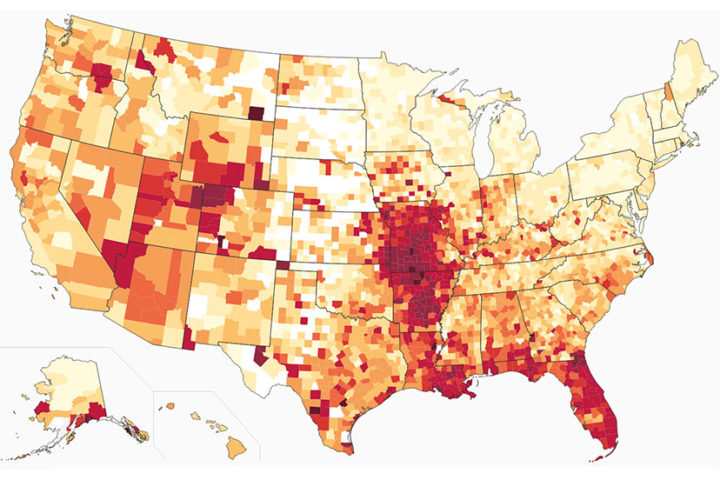 These are confirmed cases, based on testing. These are not COVID deaths. The fact that a county is “red” (like, for example, Archuleta County) is not necessarily an indication of a high death rate. As shown in the SJBPH dashboard above, Archuleta County has seen only 2 COVID deaths since March 2020. Last year, COVID infections led to an estimated death rate, in the US, of about 91 per 100,000. Archuleta County’s COVID death rate per 100,000 is about 14.
These are confirmed cases, based on testing. These are not COVID deaths. The fact that a county is “red” (like, for example, Archuleta County) is not necessarily an indication of a high death rate. As shown in the SJBPH dashboard above, Archuleta County has seen only 2 COVID deaths since March 2020. Last year, COVID infections led to an estimated death rate, in the US, of about 91 per 100,000. Archuleta County’s COVID death rate per 100,000 is about 14.
Things don’t look great at the moment, however, in terms of cases. 46 new cases over the past two weeks. 328 new infections per 100,000.
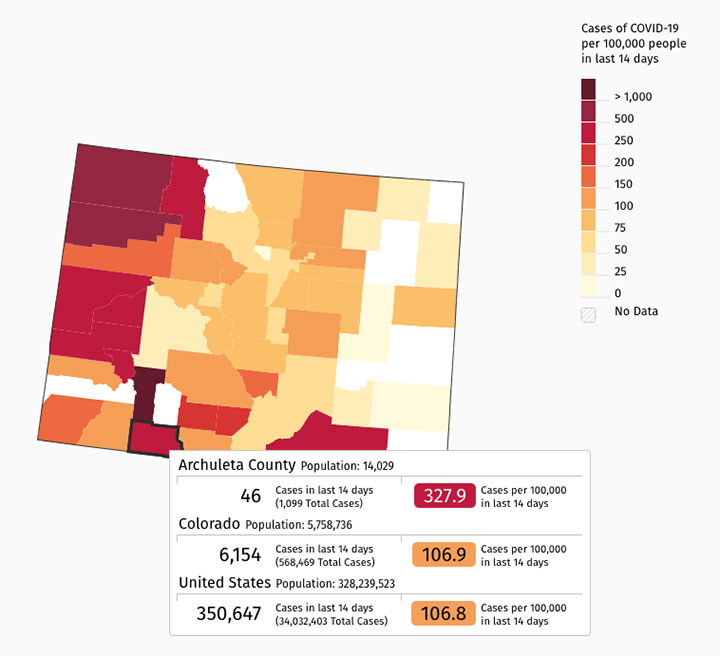 Strangely enough, the infection rate in neighboring Hinsdale County is ‘through the ceiling’ by comparison.
Strangely enough, the infection rate in neighboring Hinsdale County is ‘through the ceiling’ by comparison.
11 new cases in the past 14 days. About 1,342 cases per 100,000.
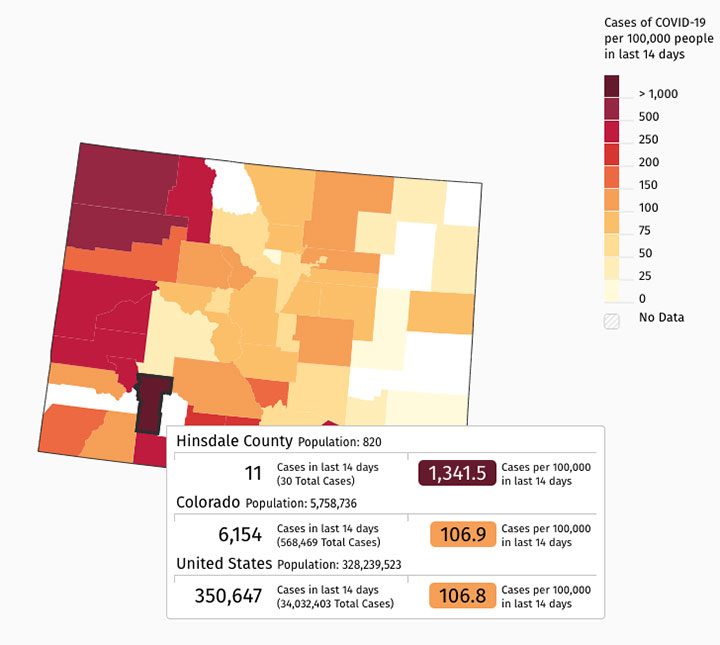 And then we have Mineral County, tucked in between Hinsdale and Archuleta.
And then we have Mineral County, tucked in between Hinsdale and Archuleta.
Zero new cases. None. Nada.
Do we understand anything from these numbers? Do we know anything about the Delta variant, which has become — by far — the dominant COVID strain in Colorado over the past couple of months?
Are vaccinated people protected against the Delta Variant? Some reports suggest that is indeed the case. Other reports raise questions. In Scotland, a study suggested the Pfizer vaccine was 79% effective against Delta variant infections. A different study, done in Israel, pegged the Pfizer vaccine as 64% effective against the Delta variant, after two doses.
Reportedly, Pfizer has asked the FDA for authorization to administer a third ‘booster’ vaccination, to increase protection against the Beta and Delta variants. The FDA has, so far, been cool to the idea. In the meantime, Pfizer has reported they are working on an ‘improved’ vaccine that might be more effective against the more contagious variants.
So many things we don’t understand.

